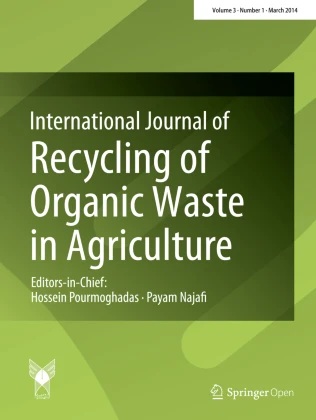Composting paper and grass clippings with anaerobically treated palm oil mill effluent
- Sustainable Palm Oil Research Unit, Universiti Malaysia Sabah, Kota Kinabalu, Malaysia
- Chemical Engineering Programme, Faculty of Engineering, Universiti Malaysia Sabah, Kota Kinabalu, Malaysia
- School of Engineering, University of Hull, Hull, UK

Received: 2015-12-15
Accepted: 2016-06-07
Published in Issue 2016-06-16

This work is licensed under a Creative Commons Attribution 4.0 International License.
How to Cite
HTML views: 3
PDF views: 4
Abstract
Purpose The purpose of this study is to investigate the composting performance of anaerobically treated palm oil mill effluent (AnPOME) mixed with paper and grass clippings. Methods Composting was conducted using a laboratory scale system for 40 days. Several parameters were determined: temperature, mass reduction, pH, electrical conductivity, colour, zeta potential, phytotoxicity and final compost nutrients.
Results The moisture content and compost mass were reduced by 24 and 18 %, respectively. Both final compost pH value and electrical conductivity were found to increase in value. Colour (measured as PtCo) was not suitable as a maturity indicator. The negative zeta potential values decreased from -12.25 to -21.80 mV. The phytotoxicity of the compost mixture was found to decrease in value during the process and the final nutrient value of the compost indicates its suitability as a soil conditioner.
Conclusions From this study, we conclude that the addition of paper and grass clippings can be a potential substrate to be composted with anaerobically treated palm oil mill effluent (AnPOME). The final compost produced is suitable for soil conditioner.
Keywords
- Composting,
- Paper,
- Grass,
- Anaerobic palm oil mill effluent,
- Phytotoxicity

 10.1007/s40093-016-0131-9
10.1007/s40093-016-0131-9











